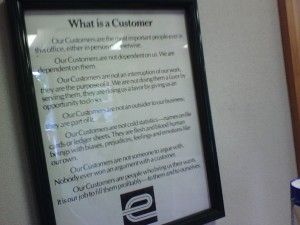June 10th, 2014 by Elma Jane
Local businesses with brick-and-mortar stores have not been early adopters of ecommerce. But, with the proliferation of mobile devices and with changes in how consumers research and buy products, most local businesses now have websites, many of them mobile optimized. Smart brick-and-mortar retailers invest in local search engine optimization to ensure that their stores are found when a local shopper searches on products that they sell. More aggressive retailers also invest in pay-per-click advertising on Google to ensure that their store names, phone numbers, and addresses are visible to a local shopper that is researching on a smartphone. Google is by far the primary search engine used by mobile shoppers. Google favors mobile friendly online stores and rewards mobile sites with high search rankings. The next logical step for local retailers is investing in on online store.
There are several reasons:
1. Having an online store will help local retailers optimize Google rankings for specific products and brands.
2. Being able to show that an item is in stock may eliminate competitive shopping.
3. Eventually local retailers could sell products to consumers outside the retailers’ immediate area, and thus expand their business.
Many local businesses are hesitant to open an online store. Here is why:
1. Local businesses are typically unfamiliar with running an ecommerce business.
2. Have little ability to ship or fulfill online orders.
3. Cannot accommodate sales tax collection outside their local area.
4. Avoid the investment required.
To be sure, adding an online store is not for every local business. But, if a local retailer offers a unique set of products, she may want to evaluate the concept.
Posted in Best Practices for Merchants, e-commerce & m-commerce Tagged with: brands, brick and mortar, brick-and-mortar stores, consumers, ecommerce, google, Mobile Devices, mobile optimized, mobile sites, online orders, online stores, pay-per-click, products, sales tax, search engine, search engine optimization, smartphone, websites
May 16th, 2014 by Elma Jane
As much as you’d like to hope that no one will ever be unhappy with your product or service, you’re almost guaranteed to encounter at least a few customers who are less than fully satisfied. Where there are customers, there are complaints.
As consumers increasingly air their grievances about brands on social media, the focus has turned to the way those brands respond to customer complaints, especially in a public forum. Knowing what to do in this situation makes all the difference when it comes to re-earning a customer’s business and what he or she tells others about your company.
Great service is about getting your customers to trust you and count on a consistent experience, but that doesn’t mean you’re always going to be perfect. In a crisis, you can elevate your stature with how well you handle the situation. A negative experience can be the best time to show your value.
Great service has to come from the top. Lower level employees aren’t going to be inspired and motivated unless they see their leader providing exceptional service.
No matter which person on your team is responsible for handling customer relations, it’s imperative that you embody excellent service as the head of the company as well.
If faced with negative customer experience follow these steps to resolve the issue and regain customer’s trust.
Acknowledging the problem – Customer is always right classic customer service cliché. While it may in fact, turn out to be a misunderstanding, the worst thing you can do is dismiss a customer who tells you he or she had a problem with your business.
Apologizing for it – Once you’ve acknowledged the customer’s issue, apologize for it and ask what you can do to help. Gather the facts about the situation and determine a course of action from there.
Taking action – Saying you’re going to fix a problem is one thing, actually doing it is another. Make sure you honor your commitment to take care of the customer’s complaint. If you can’t correct the problem, offer a coupon or voucher as a way to ask the customer for another chance.
Follow up – When you’ve done what you promised to do, follow up with the customer to make sure that your solution was satisfactory.
Posted in Best Practices for Merchants, nationaltransaction.com Tagged with: brands, consumers, coupon, customer relations, customers, forum, product, public forum, service, social media, value, voucher

